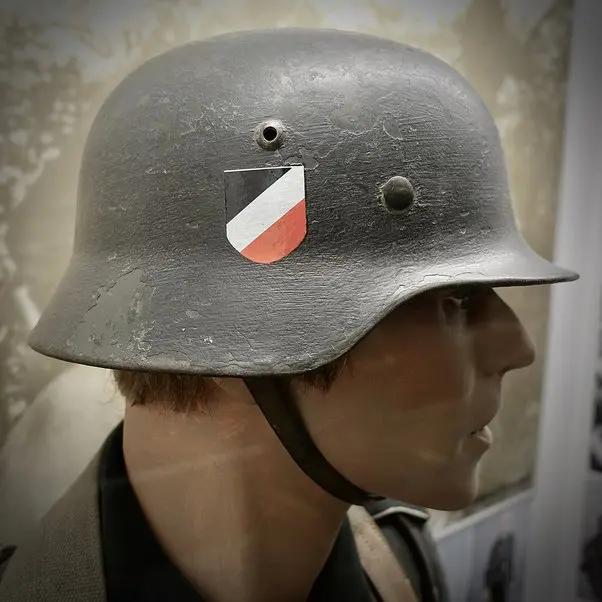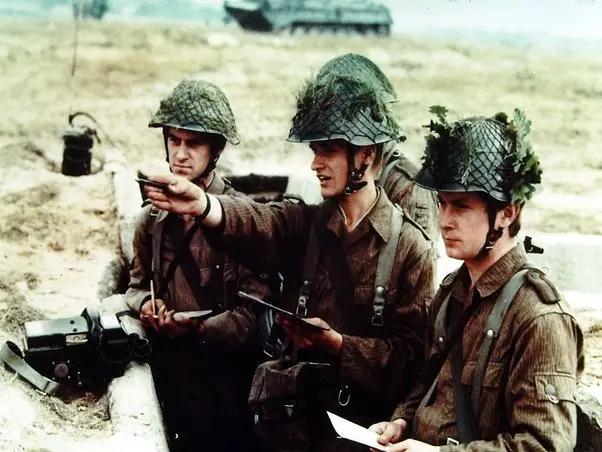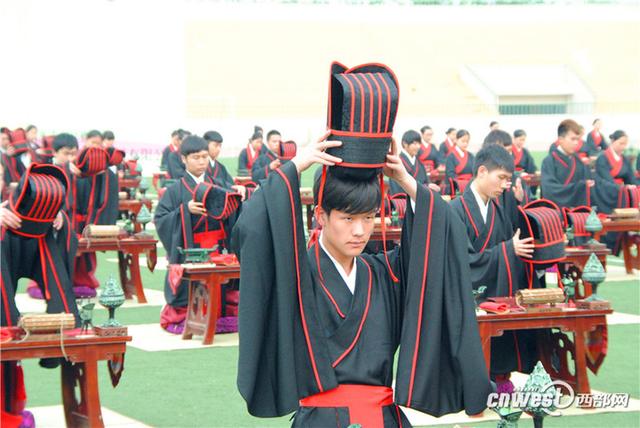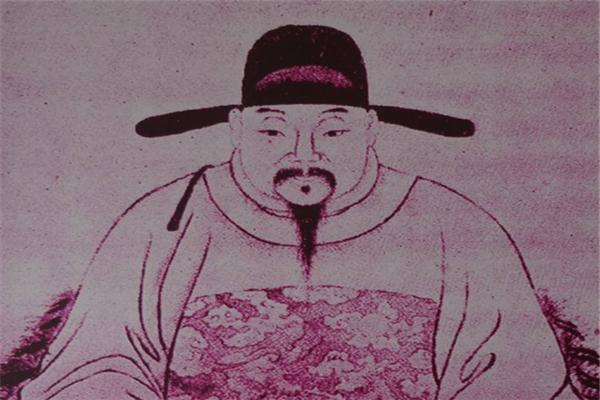二战各国头盔对比(老外说国外网友提问)
评论部分
Takeshi Iwamoto
The German helmet was the best during WW2 because it knew what it was doing, and it did it well.
The role of a helmet for a soldier is not to block bullets or directly firing projectiles, but to instead protect the head from artillery and bomb shrapnel. In this sense the Stahlhelm was the best as it got full coverage.
The entire head is protected, and the skirt around the top makes sure that anything which hits the top rolls off harmlessly. It also slightly protected the back of the head with the little skirt which dropped down a little behind.
The design was by no means perfect though, the steel used to make them at the beginning was high quality, but as the war raged on the steel would drop in quality. During WW2 however this was easily the best, the second best probably being the M1 and their similar counterparts.
德国的头盔在二战期间是最好的,因为它知道自己在做什么,而且做得很好。
头盔对士兵的作用不是阻挡子弹或直接发射的炮弹,而是保护头部免受炮弹和炸弹碎片的伤害。在这个意义上,Stahlhelm是最好的,因为它得到了全面的报道。
整个头部都受到保护,顶部周围的裙摆确保任何击中顶部的东西都不会伤害到你。它还用垂下来的小裙子稍微保护了后脑勺。
虽然设计并不完美,最初用来制造它们的钢材质量很高,但随着战争的爆发,钢材的质量会下降。然而在二战期间,这是最好的,第二好的可能是M1和类似的头盔。

Joshua Happytree
The German helmet was not the best in WW2. Not only was it not the best helmet in WW2. It was arguably not even a particularly good helmet in general. This was also realized by Nazi Germany, who actually ordered a replacement for the typical German helmet, which was patented in January 1944.
And yes, you are right in thinking this looks a lot like the East German helmet of the cold war, because it is. The East German army adopted this design as being superior, to the German WW2 helmet. We should ask why this design was considered superior by both Nazi Germany and East Germany. Like Takeshi said, in a rather misleading way, the point of the helmet wasn’t really to stop bullets, it was to protect from bomb shrapnel and other falling objects. However, it didn’t do this well. Because there wasn’t much space between the helmet and the head. Unlike Soviet, British and American helmets which had ample space between the head and helmet. You’ll notice that the primary difference between the new German helmet and the old one, is that the design puts more space between the helmet and the head, and the sloped angle offers additional protection from shrapnel hitting the side of the head.

Another piece of good evidence is the fact that, no one actually adopted the German helmet, or a copy or really anything like it. While the Soviet SSh-40 from 1940 and the very similar American M1 from 1941 was highly influential in post war helmet designs.
And while it is true that helmets were not designed to stop bullets at point blank, they could if they were well made. The below Soviet helmet on the left stopped a full rifle bullet fired from 300m
The Soviets compared Soviet helmets SSh-39 and SSh-40 with the German helmets, and determined that Soviet helmets were significantly better at stopping bullets and fragments than German helmets were. In the above graph the X axis shows the distance from the rim edge of the helmet, while the Y axis shows percentage of test fires that penetrated helmets. The white area is Soviet helmets, the darker area is German helmets. The first graph is rifle bullets at 800m, the second graph is SMG bullets at 115m, the last graph is pistol bullets at 60m. In all categories the Soviet helmet outperformed the German by a long shot, for example head on, the Soviet helmet stopped SMG bullets 90% of the time, while the German helmet only stopped it 60% of the time. A difference in 30% point is very significant.
Considering the American helmets were also identical to the Soviet ones in design, and American steel making processes were even more sophisticated, it is very likely the American helmets had protection levels equal to or better than the Soviet helmet.
So I resent the idea that the German helmet was the best in WW2, when all evidence I can think of points to the opposite.
德国的头盔在二战中不是最好的。它不仅不是二战中最好的头盔。总的来说,它甚至不是一个特别好的头盔。纳粹德国也意识到了这一点,他们订购了典型德国头盔的替代品,这种头盔在1944年1月获得了专利。
是的,你认为这看起来很像冷战时期东德的头盔是对的,因为它确实是。东德军队采用了这种设计,认为它优于德国二战时的头盔。我们应该问为什么纳粹德国和东德都认为这种设计更好。就像Takeshi说的,以一种相当误导的方式,头盔的目的不是真的阻止子弹,而是保护免受炸弹碎片和其他下落物体的伤害。然而,它并没有做得很好。因为头盔和头部之间没有太多空间。不像苏联、英国和美国的头盔,头部和头盔之间有足够的空间。你会注意到德国新头盔和旧头盔的主要区别,就是在头盔和头部之间留出了更多的空间,倾斜的角度提供了额外的保护,防止弹片击中头部的一侧。
另一个有力的证据是,没有人真正采用德国头盔,或仿制品或类似的东西。而苏联1940年的SSh-40和非常相似的美国1941年的M1在战后头盔设计中具有很大的影响力。
虽然头盔不是为了近距离挡子弹而设计的,但如果制作精良,它们是可以的。左边下方的苏联头盔挡住了从300米开外射出的一颗步枪子弹
苏联人将苏联头盔SSh-39和SSh-40与德国头盔进行了比较,发现苏联头盔在阻挡子弹和碎片方面明显优于德国头盔。在上面的图表中,X轴显示的是到头盔边缘的距离,而Y轴显示的是穿过头盔的测试火焰的百分比。白色区域是苏联头盔,较暗的区域是德国头盔。第一个图是800米的步枪子弹,第二个图是115米的SMG子弹,最后一个图是60米的手枪子弹。在所有类别中,苏联头盔的表现都远远超过德国,比如迎面射击,苏联头盔拦截SMG子弹的几率是90%,而德国头盔拦截SMG子弹的几率只有60%。30%的差距是非常显著的。
考虑到美国的头盔在设计上也和苏联的一样,美国的钢铁制造工艺甚至更复杂,美国头盔的防护水平很可能等于或优于苏联头盔。
所以我讨厌那种认为德国头盔是二战中最好的头盔的想法,而我能想到的所有证据都指向相反的方向。

Thomas Cayne
When World War I began, none of the soldiers were foreseen with any form of protection for the head other than simple cloth or leather caps.
Essentially, those were only designed against saber cuts.
(King Wilhelm II, last German Emperor and King of Prussia, with a Pickelhaube. Traditionally made from boiled leather.)
When trench warfare was initiated, severe head wounds (mostly caused by shrapnel bullets and shell fragments) increased significantly.
The reason was very simple: the head was the most exposed body part in the trenches.
Around 1915, this picture changed.
Several countries — the French were the first — started to drastically change the design of soldier head wear in view of more protection in the trench context.[1]
After a lengthy development and a number of tests carried out by Dr. Friedrich Schwerd of the Technical Institute of Hanover, the first “Stahlhelm” were introduced in February 1916 at Verdun.
The helmets were literally made of steel (hence the name).

The number of serious head injuries feel dramatically, and war history was re-written yet again.
The success story lasted very long.
After World War II, Germany continued to call their standard helmets Stahlhelm, but in fact the designs was based on the American M1 helmet.
Still, the German federal border service kept using the original German design until they switched to the M92 Aramid helmets in … 1992 !
Both the American M1 helmet and the German Stahlhelm are considered to be the best helmets of World War II.
When World War I began, none of the soldiers were foreseen with any form of protection for the head other than simple cloth or leather caps.
Essentially, those were only designed against saber cuts.
(King Wilhelm II, last German Emperor and King of Prussia, with a Pickelhaube. Traditionally made from boiled leather.)
When trench warfare was initiated, severe head wounds (mostly caused by shrapnel bullets and shell fragments) increased significantly.
The reason was very simple: the head was the most exposed body part in the trenches.
Around 1915, this picture changed.
Several countries — the French were the first — started to drastically change the design of soldier head wear in view of more protection in the trench context.[1]
After a lengthy development and a number of tests carried out by Dr. Friedrich Schwerd of the Technical Institute of Hanover, the first “Stahlhelm” were introduced in February 1916 at Verdun.
The helmets were literally made of steel (hence the name).
The number of serious head injuries feel dramatically, and war history was re-written yet again.
The success story lasted very long.
After World War II, Germany continued to call their standard helmets Stahlhelm, but in fact the designs was based on the American M1 helmet.
Still, the German federal border service kept using the original German design until they switched to the M92 Aramid helmets in … 1992 !
Both the American M1 helmet and the German Stahlhelm are considered to be the best helmets of World War II.
第一次世界大战开始时,没有一个士兵被预见有任何形式的头部保护,除了简单的布或皮帽。
基本上,这些都是为了防止被军刀砍伤而设计的。
(德国末代皇帝、普鲁士国王威廉二世带着一件皮克尔豪贝大衣。传统上由煮过的皮革制成。)
在堑壕战开始时,严重的头部创伤(主要是由弹片和炮弹碎片造成)显著增加。
原因很简单:头部是战壕中最暴露的身体部位。
大约在1915年,这种情况发生了变化。
几个国家-法国是第一个-为了在战壕中提供更多的保护,开始彻底改变士兵头部的设计
经过长时间的发展和由汉诺威技术学院的Friedrich Schwerd博士进行的一系列测试,第一个“Stahlhelm”于1916年2月在凡尔登推出。
头盔实际上是钢做的(因此得名)。
严重头部受伤的人数令人震惊,战争历史再次被改写。
这个成功的故事持续了很长时间。
第二次世界大战后,德国继续称他们的标准头盔为Stahlhelm,但实际上设计是基于美国的M1头盔。
尽管如此,德国联邦边境服务一直在使用最初的德国设计,直到他们在1992年改用M92 Aramid头盔!
美国的M1头盔和德国的Stahlhelm头盔都被认为是第二次世界大战中最好的头盔。

Igor Sabirov
It wasn’t. The best were Swedish, with their adequate shape and very high quality steel.
German M35 was good but heavy, M40 were probably among the worst of the time, and M42 was mediocre at best. At least the latter was cheap.
Here’s what Soviets found out:
Apparently German helmet offered worse protection then Soviet SSh-40 in almost every aspect while being much heavier.
德国头盔不是最好的。最好的是瑞典的,有足够的形状和非常高质量的钢。
德国的M35不错,但很重,M40可能是当时最差的,而M42充其量也只是中等水平。至少后者是便宜的。
以下是苏联人的发现:
显然,德国的头盔在几乎所有方面都比苏联的SSh-40提供了更差的保护,而且更重。

Ben Dover
Quick story: My great-grandfather got stranded in France from his unit and had to climb north to reconnect with American and British units advancing through France on the buildup to the Battle of the Bulge. He got pinned in a French village by a German sniper. In classic form, the German was hiding in the towns church and bell tower - something Americans like my grandfather were told was common by command. He managed to outmaneuver this German and used his M1 while the German was reloading to put it through his head. If you hate us Americans, maybe it’ll make you feel better to learn my grandpa later took a near direct hit from German artillery that left flak in his back til death, and also got two MG-42 bullets in his buttocks during the Battle of the Bulge.
We have the helmet, it went through the German’s face and the exit blew out a part of the helmet. Again; the bullet went through his face and back out, it did not contact the helmet first. German helmets were not the best, in fact, their ‘superior’ equipment failed so often in harsh conditions that it is one of the primary reasons that Germany lost the fight for Stalingrad. It is important to point out, modern helmets will not assure you against anything either. They exist more for shock events, flak events, and preventing head trauma during battle that might compromise a soldier’s ability to perform. Small rounds might not penetrate, but again there is no guarantee. A great case study would be looking at WWI more, as it’s common knowledge that the Germans and Allies would both deploy snipers to look specifically for helmets just above the trench line to get a head shot. This is why they hugged trenches so low, as the machine guns weren’t in range until running through no mans land. Hope this helps, happy history!
小故事:我的曾祖父被他的部队困在了法国,不得不向北攀登,与正在法国集结准备阿登战役的英美部队重新会合。他被德国狙击手困在一个法国村庄。典型的情况是,德国人躲在城镇的教堂和钟楼里——像我祖父这样的美国人被告知这是一种命令。他在战术上战胜了这个德国人,用他的M1在德国人重新装弹的时候刺穿了他的脑袋。如果你恨我们美国人,也许知道我爷爷后来几乎直接被德国炮兵击中,背部受到高射炮,直到死亡,而且在Bulge战役中屁股中了两颗MG-42子弹会让你感觉好一点。
我们有头盔,它穿过了德国人的脸,出口炸掉了一部分头盔。再一次;子弹穿过了他的脸,然后弹了出来,它并没有首先接触到头盔。德国的头盔不是最好的,事实上,他们的“优越”装备在恶劣的条件下经常失败,这是德国输掉斯大林格勒战役的主要原因之一。需要指出的是,现代头盔也不能保证你能抵御任何东西。它们更多的是用于休克事件,高射炮事件,以及在战斗中防止可能影响士兵表现能力的头部创伤。小子弹可能无法穿透,但这也不能保证。一个很好的案例是更多地着眼于一战,因为大家都知道德国人和盟军都会部署狙击手在战壕线上方寻找头盔来进行头部射击。这就是为什么他们把战壕围得这么低,因为机关枪只有在穿越无人地带时才进入射程。希望这有助于,快乐的历史!

Richard Hardy
It was the superior German manufacturing process.
Helmets were brought in because this new war of heavy artillery (75% of all WW1 casualties were artillery)was creating a lot of head injuries.
The British Brodie helmet was made in just one pressing of a flat piece of steel held between the two male & female formers.This just one pressing dragged most of the steel down to the base so that the Brodie had a thick rim but was very thin on top where it was supposed to prevent shrapnel and sometimes sniper wounds.
The German Stahlhelm was made in three of four pressings so that the thickness was the same from top to rim and all around.
这是德国先进的制造工艺。
头盔被引入是因为这场新的重炮战争(75%的一战伤亡是火炮造成的)造成了大量的头部受伤。
英国的布罗迪头盔是用一块扁平的钢夹在两个男性和女性之间一次压制而成的。这一压就把大部分钢铁拖到了底部,所以布罗迪有一个很厚的边缘,但顶部很薄,这是为了防止弹片和有时狙击手的伤害。
德国Stahlhelm是经过四次加压三次制成的,所以从顶部到边缘和周围的厚度都是一样的。

Kit Schneider
Because the Americans adopted it after Vietnam? Look at our design today. I don’t see much difference. Something must have been right about it.
因为美国人在越南战争后采用了德国头盔的设计?看看我们今天的设计。我看不出有什么区别。肯定有什么是对的。
George White
I would argue that Czechoslovakian helmets had better ballistics, more sound structure and were cheaper. The Czech helmet appears to have influenced the Thale b2, which was adopted as the M56 by East Germany, as well as the sloped ssh68 helmet of the USSR. Basically the more like a triangle your helmet is, the better.
The ww2 helmet had a lot of issues, such as it was weaker at the angled parts and had a relatively large amount of rivets and holes in the superstructure, not to mention it was expensive as they required double stamping to get the unique shape, and before 1942 the edges were required to be rolled and crimped.
Take a look at the soviet SSH40 or the Italian M33: Both were developed from the ww1 stahlhelm, and essentially all the angles were simply smoothed out, resulting in a similar shape, where the angle where the wearers ears are still resembles the German shape, but the outside is a solid rounded shape, the American M1 seems to have followed a similar evolution
我认为捷克斯洛伐克的头盔弹道更好,结构更牢固,而且更便宜。捷克的头盔似乎影响了东德作为M56采用的泰勒斯b2,以及苏联的倾斜ssh68头盔。基本上,你的头盔越像三角形越好。
二战头盔有很多问题,比如它在倾斜部分较弱,相对大量的铆钉和孔洞的上层建筑,更不用说它是昂贵的,因为他们需要双冲压独特的形状,和1942年以前的边缘需要滚和卷曲。
看看苏联的SSH40和意大利的M33:都是一战时候的stahlhelm,基本上所有的角度都是简单地理顺,导致类似的形状,在穿耳的角度仍像德国的形状,但外面有一个坚实的圆形形状,美国M1似乎遵循了类似的进化

Florin Sutu
I am adding to the answer of Carl Hamilton that the manufacturing technology of the classic German helmet (implemented in World War One) was a bit more complicated and a bit more expensive than the producing of other helmets, the British for example.
That German design from 1944, reminded by Carl Hamilton, also tried to reduce the manufacturing cost. It is interesting that in the same 1944, not satisfied with their classic helmets (for good reasons), the British also proposed a new helmet design, which resemble a lot with the German design from 1944. The two sides did the design independently, not being aware of what the other side was doing.
Hitler stopped the implementation of the new German helmet, simply for political reasons. Already since World War One, the classic German design became something automatically associated with the German Army and represented accordingly in the propaganda posters of both sides, for better or for worse.、
我想补充一下卡尔·汉密尔顿的回答,德国经典头盔(在第一次世界大战中实施)的制造技术比其他头盔(例如英国)的制造技术更复杂,也更昂贵。
卡尔·汉密尔顿(Carl Hamilton)在1944年提出的德国设计,也试图降低制造成本。有趣的是,在同一1944年,英国人不满意他们的经典头盔(有充分的理由),还提出了一个新的头盔设计,这与德国1944年的设计非常相似。双方独立进行设计,没有意识到对方在做什么。
希特勒停止实施新的德国头盔,仅仅是出于政治原因。自从第一次世界大战以来,经典的德国设计就自动与德国军队联系在一起,并相应地出现在双方的宣传海报上,无论好坏。

Thomas Rouse
The Stahlhelm was a good helmet and offered more protection than most others, but the M1 was a much more versatile piece of equipment.
The liner was made of resin-impregnated cotton strips and carried the suspension. The shell, or “pot” covered the liner and was removable. This design made attaching cloth covers or camouflage netting very easy. More importantly though, when removed from the liner, the pot was a very useful tool.
A soldier could carry water in it. He could bathe with it. If he ‘foraged’ some eggs, fruit, or whatever, he could carry them in it. If he had to, he could cook in it. In an emergency, he could dig with it.
The other helmets protected the soldiers from shell fragments. The M1 did that, but it also helped the soldiers live in the field.
Stahlhelm是一个很好的头盔,提供了比大多数其他头盔更多的保护,但是M1是一个更多功能的装备。
衬里是由浸有树脂的棉条制成的,用来承载悬浮物。外壳,或“罐”覆盖衬垫,并可拆卸。这种设计使得附加布面或伪装网非常容易。更重要的是,当从衬垫上拿下来时,这个罐子是一个非常有用的工具。
士兵可以用它挑水。他可以用它洗澡。如果他“找”了一些鸡蛋、水果或其他什么东西,他可以把它们装进去。如果有必要,他可以用它做饭。在紧急情况下,他可以用它挖。
其他头盔保护士兵不受炮弹碎片的伤害。M1做到了这一点,但它也帮助士兵在战场上生活。
Doctor Doggo
It was the best for its weight-protection ratio, but as far as pure protection goes it just wasn’t. I believe the soviet and American militaries both did a test after the war ended on the average protection provided by the different helmets of the belligerents.
The soviet helmet provided the most. This was primarily due to the fact that it used more steel then the M1 helmet or the different variants of the Stalhelm used. It was heavier, less comfortable, but it provided more protection.
就其体重保护比例而言,它是最好的,但就纯粹的保护而言,它还不是。我相信苏联和美国军队在战争结束后都做了一个测试,测试交战双方不同头盔提供的平均保护。
苏联的头盔提供了最多的帮助。这主要是由于它比M1头盔或不同版本的Stalhelm使用了更多的钢。它更重,不太舒服,但它提供了更多的保护。
,免责声明:本文仅代表文章作者的个人观点,与本站无关。其原创性、真实性以及文中陈述文字和内容未经本站证实,对本文以及其中全部或者部分内容文字的真实性、完整性和原创性本站不作任何保证或承诺,请读者仅作参考,并自行核实相关内容。文章投诉邮箱:anhduc.ph@yahoo.com






